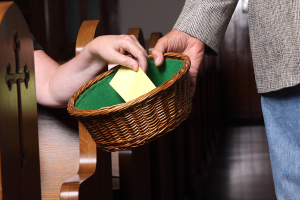Last Plans Underway for Christian Churches Together Launch
Nearly 70 top representatives of 30 denominations are gathering behind closed doors today to place the finishing touches on what may become the most extensive ecumenical effort in U.S. history.
Nearly 70 top representatives of 30 denominations are gathering behind closed doors today to place the finishing touches on what may become the most extensive ecumenical effort in U.S. history.
Christian Churches Together in the U.S.A (CCT) is the first group that is attempting to formally organize the five major Christian faith families – Evangelical/Pentecostal, Mainline Protestant, Racial/Ethnic, Catholic and Orthodox – around one conversational table.
While plans for CCT began nearly four years ago, the group struggled to attract enough denominations – the minimum cap was placed at 25 – and gain the Catholic and Orthodox support until only recently.
With both conditions now met, the representatives will prepare the fledgling group for its official public flight - slated for September 2005 - during today’s steering committee gathering at a Jesuit retreat house in Los Altos, California.
“This is the point at which we’re coming together to see if we can organize ourselves and become officially established,” said Wesley Granberg-Michaelson, the General Secretary of the Reformed Church in America who chairs the CCT committee. “This represents four years of preparation, work and leading together, and we’re asking if we’re now ready to launch.”
At the heart of CCT lies the desire to unite the body of Christ and to strengthen Christian witness in the world – the same ecumenical vision shared by the National Association of Evangelicals (NAE) and the U.S. National Council of Churches (NCC).
The idea for CCT emerged from discussions three years ago within the NCC, shortly after the Council suffered a financial crisis that nearly choked the 50 million-member body. The new group was initially viewed as a replacement for the NCC by many leaders.
“When it was initially launched, it was thought of as the new NCC because it began when the NCC was in a very difficult situation financially,” said Rev. Larry Pickens, a CCT steering committee member and the executive for the United Methodist Church’s Commission on Christian Unity.
However, through time, both groups were strengthened and have developed their bodies to serve different functions.
“I don’t see the CCT as a replacement for the NCC now because it’s a different table,” Pickens said. “The two are serving different functions.”
One clear difference is the CCT’s ability to bring evangelicals and mainline denominations around the same table – a feat that had been blocked over the years by the NAE’s requirement for its members to steer clear of the more liberal NCC.
“There have been huge divisions between the NCC and NAE and the organizations in the past made decisions that they did not want to associate with each other,” Michaelson explained to the Christian Post on Tuesday.
But through the CCT, some of the NAE members have an avenue for fellowship with their mainline counterparts.
Evangelical groups that have signed onto the CCT include the Salvation Army, the Evangelical Free Church, the Christian Reformed Church, the Evangelical Holiness Church, World Vision and Open Bible Churches.
According to Michaelson, this unity represents the core of the CCT’s mission, “which is to draw closer together in Christ and become a model that can show other Christians that we are called to unity for the sake of witness.”
“The CCT will represent for the first time where such a wide array of Christian churches will come together officially and commit to one another as Christians,” he said. “It’s never happened in the world before and it’s a sign that at least in the United States there is a growing thirst for bringing together the different parts of the Christian body that has been separated for far too long.”
As for Pickens, the CCT opens up the core questions about the importance of ecumenism in the life of an individual church.
“I think through this we will continue to evaluate all of our ecumenical relationships, and assess why we are a part of any ecumenical entity at all,” he said. “What are these ecumenical entities in terms of the benefits we get as a denomination?”
According to Pickens, these are the questions all the churches want to answer.




























